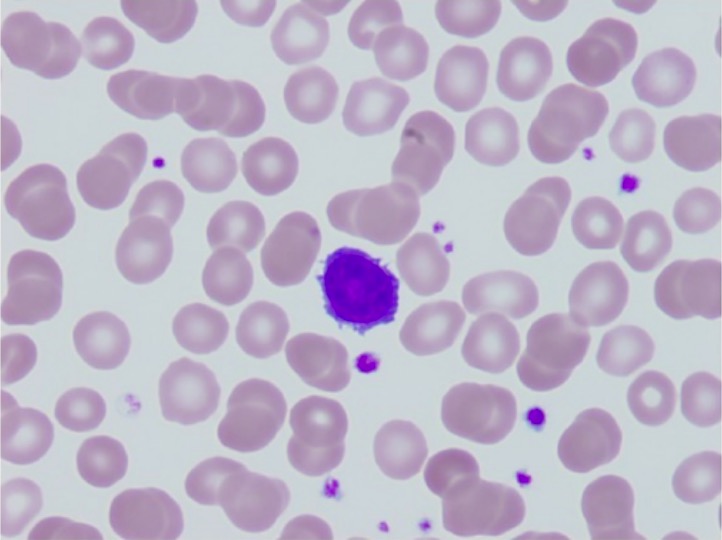Playlist
Show Playlist
Hide Playlist
Recognition of Antigens – Lymphocyte Development
-
Slides Recognition of Antigens Lymphocyte Development.pdf
-
Download Lecture Overview
00:01 Let us look at lymphocyte development, the way that lymphocytes develop in the body. 00:06 The recognition of antigen by the immune system occurs using four different types of molecule. 00:14 The Pattern Recognition Receptors which are present on cell surfaces, inside cells and secreted or released from cells, recognize Pathogen-Associated Molecular Patterns and Damage-Associated Molecular Patterns. 00:32 We have maybe a small, few hundred of these. 00:37 Let’s say one or two hundred or so different Pattern Recognition Receptors that we each possess. 00:49 Each of these is individually encoded by a gene. 00:53 So for each Pattern Recognition Receptor we have a different gene, and they are not very variable from one individual to another. 01:02 So for a given Pattern Recognition Receptor, probably your Pattern Recognition Receptor’s exactly the same as mine. 01:08 Let’s say TLR4, probably your TLR4 is exactly the same as mine. 01:12 In other words, they have low polymorphism at the genetic level. 01:16 They don’t vary from one individual to another for each individual Pattern Recognition Receptor. 01:23 Then we have the Major Histocompatibility Complex molecules. 01:27 These are cell surface molecules and each different MHC variant can bind many different peptides derived by processing of protein antigens. 01:43 And in each individual, there are around about 12 different MHC molecules, with respect to what we call the classical MHC molecules, the main MHC molecules. 01:55 We each have about 12 of these. 01:59 Each protein is individually encoded. 02:04 So for MHC Class I in the human, we have HLA-A, HLA-B, HLA-C. 02:12 For Class II we have HLA-DP, -DQ, -DR. 02:16 And each of those will have its own gene. 02:18 But at each gene locus, let’s say the HLA-A gene locus, the sequence varies hugely from one individual to another. 02:30 So, my HLA-A molecules are probably different to your HLA-A molecules. 02:37 And therefore, they are described as being extremely polymorphic between one individual and another. 02:46 Then at the level of the cell surface of lymphocytes, on T-cells, we have the T-cell receptor. 02:55 This molecule is highly specific for a given combination of a peptide that is produced by processing of protein antigen, put together with MHC molecules. 03:08 So T-cell receptors are highly peptide MHC specific. 03:12 And we can create millions and millions and millions of different T-cell receptors. 03:18 Each of us can do that, quite remarkable. 03:20 And this is due to a unique genetic recombination mechanism to create diversity. 03:28 The B-cells have a similar molecule on their surface. 03:32 It’s a different molecule encoded by different genes, but in many ways it’s similar. 03:37 But on the B-cell surface, you have a B-cell receptor or BCR. 03:43 But this molecule unlike the T-cell receptor can also be released from B-lymphocytes. 03:50 So it’s produced in both the cell surface and the secreted form, whereas the T-cell receptor is only ever produced in a cell surface form. 03:58 Antibody recognizes antigen in a highly antigen specific way. 04:05 Just like we can produce millions of T-cell receptors, so we can produce many millions of B-cell receptors and antibodies. 04:12 Okay, the B-cell receptor is simply a transmembrane form on the cell surface of a B-cell. 04:19 And we can do this, just like we can for the T-cell receptors, because of this unique genetic recombination mechanism. So we have a bunch of T-cell receptor genes, we have a separate bunch of B-cell receptor genes or antibody genes, and these can recombine by a mechanism that’s completely unique. There’s nothing else in the body does anything like this. From a small number of genes, a relatively small number of genes, we can make millions and millions and millions of different antigen receptors. And it’s one of the things that makes the adaptive immune response quite so remarkable.
About the Lecture
The lecture Recognition of Antigens – Lymphocyte Development by Peter Delves, PhD is from the course Adaptive Immune System.
Included Quiz Questions
How many different classical MHC molecules are expressed in each individual?
- 12-14
- 100
- Several million
- 2-6
- 32-56
Which of the following is NOT a type of pattern recognition receptor?
- Nuclear
- Cytoplasmic
- Membrane-bound
- Secretory
- Cell-surface
Which of the following is a major difference between B-cell receptors (BCR) and T-cell receptors (TCR)?
- Only B-cell receptors can be secreted.
- Only TCRs are highly specific.
- Only BCRs are highly specific.
- Only TCRs can be found on the cell surface.
- Only TCRs are part of the adaptive immune system
Customer reviews
5,0 of 5 stars
| 5 Stars |
|
2 |
| 4 Stars |
|
0 |
| 3 Stars |
|
0 |
| 2 Stars |
|
0 |
| 1 Star |
|
0 |
In my university class I wasn't understand this, but the video class with dr. Peter is so clear for me, thanks. Sorry for my english
This topic is finally explained very precisely. I liked this lecture a lot.




